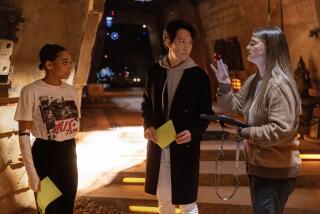âStar Warsâ Theology
It has been nearly two years since President Reaganâs âStar Warsâ speech challenging the nationâs research laboratories to fashion a nuclear shield for the United States. What he has to show for it so far is more theology than technology. But itâs the theology that he and a handful of advisers who still believe that âStar Warsâ can work will intone as they try to persuade Congress to invest nearly as much money in research this year as General Motors earned in 1984, its best year ever. It will have to be theology. There is no technology.
The cost of research alone on what the Administration calls the Strategic Defense Initiative is estimated at $26 billion, more than was spent on the World War II Manhattan Project that produced the worldâs first nuclear weapons. The project has fuzzy goals and the capacity to blow up arms-control negotiations. Worse, there is some danger that unless Congress cuts it down to size immediately it will assume a life of its own like so many of the Pentagonâs high-tech pipedreams. The most dangerous sign is that there already are 10 defense contractors with a piece of the âStar Warsâ action.
The Reagan Administration wants $3.7 billion in the next federal budget for its Strategic Defense Initiative. When Congress begins asking during formal budget hearings what it will get for its money, the dialogue will go something like this:
Q: What will the system look like?
A: Nobody knows.
Q: What will it be able to do?
A: Nobody knows.
The language that the President used in 1983 implied a shield woven together with orbiting battleships over the United States or ground-based laser beams that would pulverize enemy missiles before they could reach Americans. Scientists who still have faith that a shield of any kind can ever be fashioned talk of that as an âultimate goal,â to be reached heaven knows when. In the meantime, they say, early stages of such a system could protect missiles--not people--or even knock down errant weapons lobbed in by some as-yet-unknown small nation. Nobody except the President still talks of a system that might block the hundreds of missiles that might be launched in anger by the Soviet Union one day--not in this generation, at least, or perhaps ever.
The first canon of âStar Warsâ theology is that the shield would be a âmoralâ replacement for the âimmoralâ concept of peace through deterrence. The theory of deterrence is what the world now lives with. It says that neither superpower will launch nuclear missiles at the other because it can count on being bombed back beyond the Stone Age toward the big bang of creation if it does.
But where is the morality in a Presidentâs promise, repeated as recently as his State of the Union speech on Monday, of protection against nuclear weapons when the promise itself is flawed and may well stall the very arms reductions that the President says he wants?
Former Defense Secretary James R. Schlesinger once again this week called the Reagan vision an illusion. Of more immediate concern is a warning from Brent Scowcroft, a retired Air Force general who has served as a White House security adviser and has been directly involved in arms-control negotiations.
He says that even promising an illusion can either make arms-control talks more complicated and difficult or touch off a new round of missile building in a race by the Soviets to overwhelm a defense system--or perhaps both.
With the opening of arms talks in Geneva so near at hand, Congress should ignore the theology of âStar Wars,â set aside the dream of safety in a nuclear world and concentrate on defense policies that will make controls easier, not more difficult, to negotiate.
More to Read
Sign up for Essential California
The most important California stories and recommendations in your inbox every morning.
You may occasionally receive promotional content from the Los Angeles Times.










